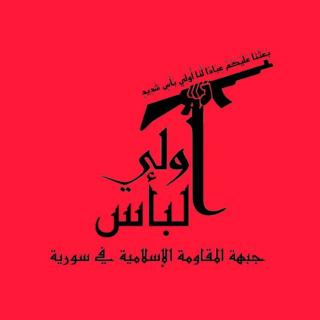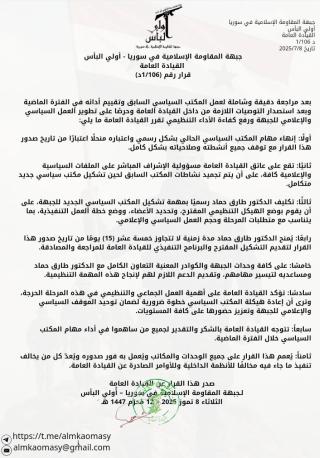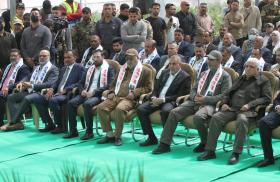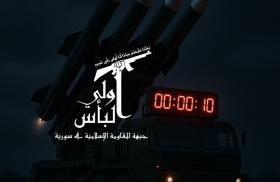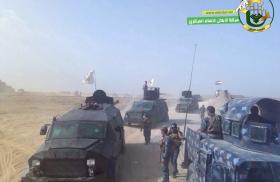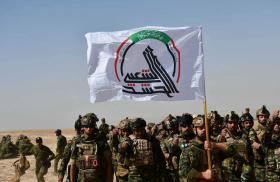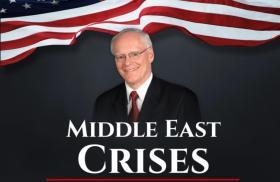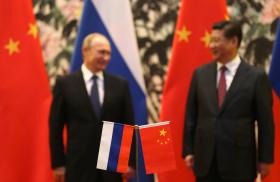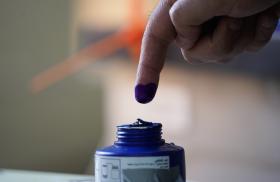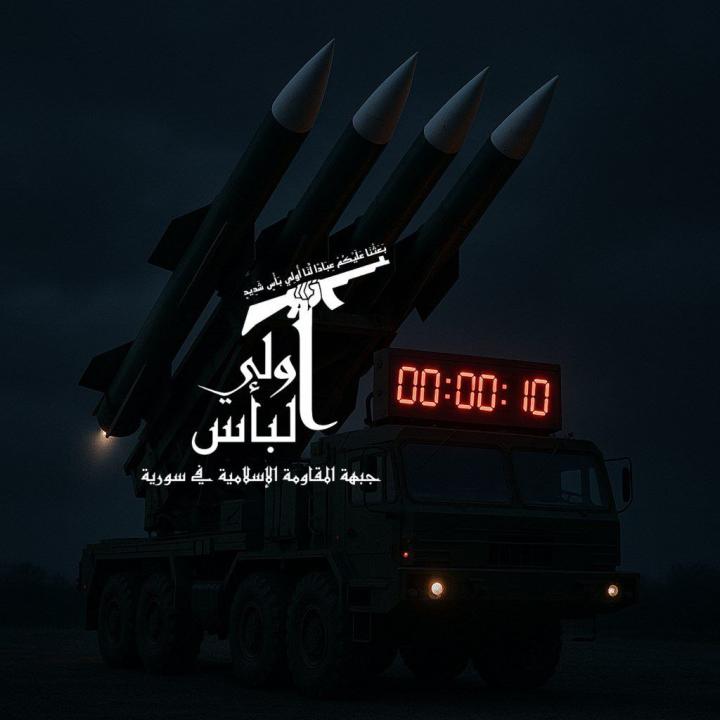
Profile: Uli al-Baas

Part of a series: Militia Spotlight: Profiles
or see Part 1: How to Use Militia Spotlight: Profiles
Part of a series: Militia Spotlight
or see Part 1: How to Use Militia Spotlight
An Iran-linked propaganda and paramilitary formation with stated ambitions to form a new anti-government insurgent and political structure in Syria.
Name: Jabhat al-Muqawama al-Islamiya fi Surya-Uli al-Baas (Islamic Resistance Front in Syria–Possessors of Might)
Type of movement: Early stage fasail (armed group) in Syria. Full spectrum of claimed kinetic attacks against Israeli forces and the Syrian interim government. Information operations (media activities and propaganda) against the governments of Syria, Turkey, the United States, and Israel. Operates as an Iran-linked propaganda and paramilitary formation, with stated ambitions to form a new political structure in Syria.
History and objectives:
- On December 17, 2024, the Syrian Social Nationalist Party (SSNP) called for "the establishment of a front to liberate southern Syria” from “Jewish aggression” and “work toward liberating all the occupied territories [in Syria].” The SSNP operates in both Syria and Lebanon and maintains strong ties with both the former Assad regime's Baath Party and Lebanese Hezbollah.
- On January 9, 2025, Jabhat Tahrir al-Janoub (JTJ, or the Southern Liberation Front) emerged as a “resistance group” originally focused on Israeli activity in Quneitra and Deraa, claiming to use military equipment left behind by Bashar al-Assad's regime. Two days later, JTJ rebranded, changing its name to Uli al-Baas (UAB) and switching its logo from a map of Syria with the name "Southern Liberation Front” to one featuring a long arm holding an AK-47—a well-known bit of Hezbollah-style iconography that traditionally indicates a "resistance" narrative aligned with other militias backed by Iran's Islamic Revolutionary Guard Corps (IRGC).
- In January 2025, UAB announced numerous operations against Israeli forces, including on January 13, when it claimed to deploy light armored vehicles and fighters to Quneitra, Suwayda, Deraa, Damascus, and the countryside surrounding the capital. On January 21, it claimed to down an Israeli drone in southern Syria. And on January 31, it claimed an attack on Israeli forces in the village of Taranja in the northern countryside of Quneitra, although it failed to provide evidence and later denied the incident on its official Telegram channel in February. UAB subsequently downplayed all of these claims and instead acknowledged that a preparatory phase was still underway.
In February 2025, UAB reported the deaths of two senior members near Israeli lines and emphasized coordination with other pro-"resistance" factions, including Liwa Dir al-Sahel (Shield of the Coast Brigade) and Ashbah Rouh al-Muqawama (Ghosts of the Spirit of Resistance Forces). It then shared a video showing a blurred image of approximately twenty-five fighters. The men were depicted wearing a combination of paramilitary gear and civilian clothing, armed with personal weapons and a few rocket-propelled grenades (Figure 1).
Figure 1: UAB video featuring a blurred image of fighters, February 27, 2025. - On March 8, 2025, UAB claimed its first joint kinetic operations with the so-called "Syrian Popular Resistance" forces against the new government. The statement declared that “Turkish, Zionist, American, and Arab occupiers seek to eliminate the Syrian people and fragment them into easily conquerable pieces so their wealth can be plundered.” Later, an April 17 UAB statement claimed that the United Kingdom and Russia are among the “occupiers of Syria.”
- In a March 27 interview with Lebanese newspaper an-Nahar, a UAB media source emphasized that the group "is not a transient movement, but rather a fully integrated organization," noting the existence of "specialized offices, including political, media, social, and military branches." The source also claimed that UAB’s relationship with the Syrian Popular Resistance forces had ended: “There was coordination between the two sides in the past. But since the events on the coast on March 6 and the accusations leveled against the Front for being responsible, we have distanced ourselves from this faction.” He also claimed that the other faction lacked a clear leadership direction.
- On May 5-7, 2025, UAB claimed to have held its “First General Extraordinary Conference” in Damascus, announcing a “Unified Military Council” and the launch of a campaign of “organized revolutionary escalation.”
On June 3, 2025, UAB posted its first low-quality video showing rocket launchers and claimed to have fired into the Israeli-held Golan Heights. This marked its first partially verifiable military claim and first cross-border strike since Assad’s fall in December 2024.
Figure 2: UAB statement, July 8, 2025. - On July 8, 2025, UAB released a statement formally confirming the structure of the General Leadership and declaring that it would lead all field, political, and media operations. The document also announced the full dissolution of the old political office and tasked Dr. Tariq Hamad (name unverified) with forming a new political bureau within fifteen days to work under the General Leadership.
- On July 6, 2025, UAB announced the death of its deputy commander-in-chief, Brig. Gen. Muhammad Badran (Abu Ali). He was reportedly killed by Israeli forces while leading an operation in the town of Nawa in the Deraa countryside.
- On July 8, 2025, UAB announced a leadership restructuring, officially dissolving its political office and appointing Dr. Tariq Hammad to lead the formation of a new political team with revised responsibilities and an updated organizational structure (Figure 2).
- On July 15, 2025, UAB announced, “The military leadership and all elements of the Syrian Popular Resistance pledge allegiance to the Islamic Resistance Front in Syria-Uli al-Baas, and officially announce joining the Front,” adding “death to the agents of the Zionists" (Figure 3).
Figure 3: Members of the Syrian Resistance Front pledging allegiance to UAB, July 15, 2025. UAB now presents itself as an ideologically driven movement with aspirations to act across Syria through a centralized leadership and integrated “resistance” project.
Chain of command:
UAB appears to be ideologically and structurally aligned with Iran’s IRGC-Qods Force. Its messaging is amplified by Farsi-language IRGC-affiliated Telegram channels such as “IRGC Cyber Corps,” and its logo resembles that of IRGC client militias like Lebanese Hezbollah and Harakat Hezbollah al-Nujaba.
As of July 21, 2025, UAB's leadership includes the following unverified figures:
- General Leader: Abu Jihad Ridha al-Husseini
- Deputy General Leader: Brig. Gen. Munthir Wannus (formerly commander of the Syrian Popular Resistance until July 8, 2025)
- Chief of Staff: Brig. Gen. Ahmad Jad Allah
- Head of Political Office: Dr. Tariq Hamad
- Head of Security and Intelligence: Brig. Gen. Abu Mujahid
- Head of Mobilization and Organization: Col. Hashim Abu Shuaib
- Head of Public Relations (previously Head of Central Media): Dr. Abbas al-Ahmad
- Military Spokesman: Abu al-Qasem
- Head of Women's Affairs: Batul Badr
- Head of Economic Affairs: Dr. Jubran Salim
- Head of Organizational Affairs: Ali al-Ashqar
- Head of Expatriates Unit (Russia): Malak al-Dhahir
- Politburo Member: Dr. Mufid Shirbil
Affiliate relationships:
In February 2025, UAB entered an alliance with:
- Liwa Dir al-Sahel (Shield of the Coast Brigade), led by Miqdad Fatiha and focused on the coastal region. This alliance faced some difficulties later, though there are some early indications that members of Liwa Dir al-Sahel joined UAB.
- Ashbah Rouh al-Muqawama (Ghosts of the Spirit of Resistance Forces), led by Dr. Abdulhamid al-Shamali and focused on eastern Syria. This claim alliance is unverified.
- Saraya al-Areen (Companies of the Den): Claimed paramilitary subunit led by Col. Hashim Abu Shuaib and focused on southern Syria. According to UAB’s July 8 statement, he assumed the role of head of mobilization and organization.
- Syrian Popular Resistance: Claimed to participate in the May 2025 conference.
Subordinate elements:
- Two Telegram channels that serve as UAB's primary outlet for propaganda, eulogies, political statements, and video content.
- UAB also has some affiliated Telegram channels operating under other names such as al-Uqaab (Eagle).
UAB has an "Expatriates Unit" that claims to liaise with Assad loyalist elements in Russia.

